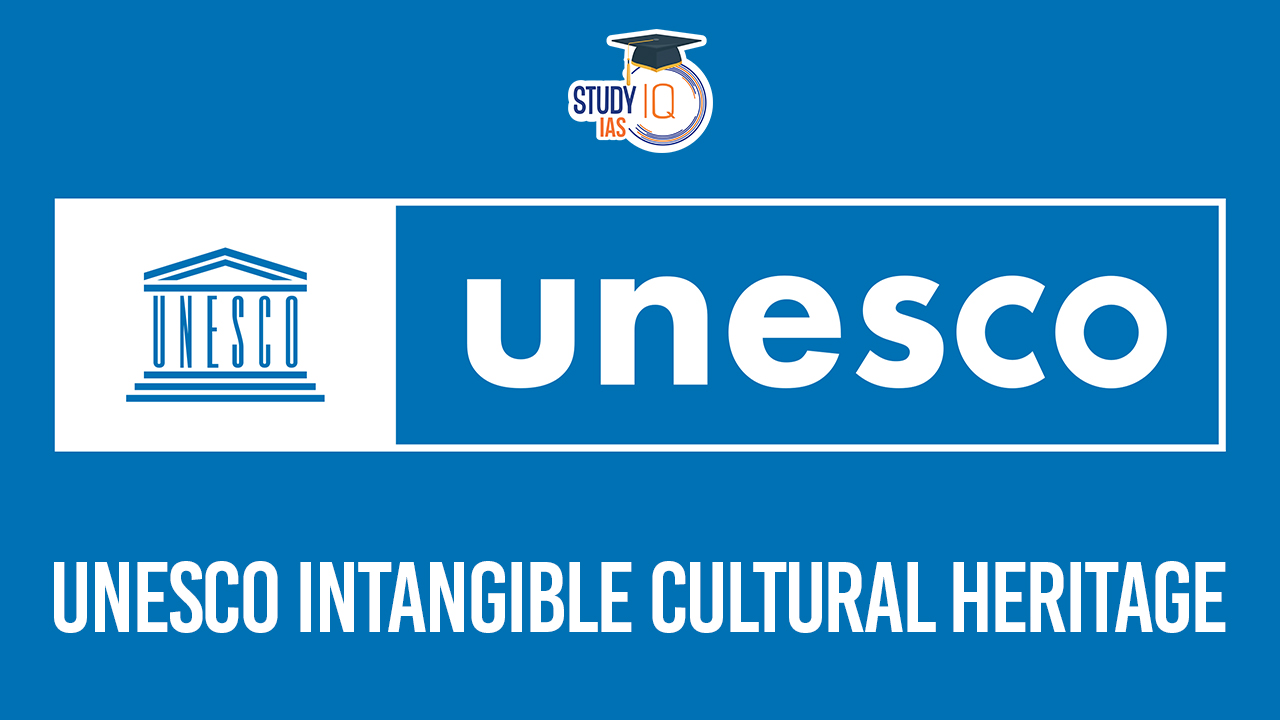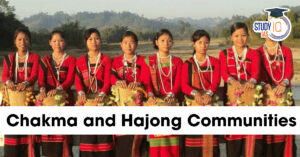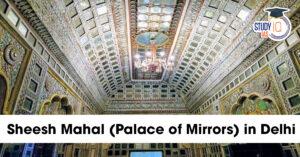Table of Contents
UNESCO defines intangible cultural heritage as encompassing practices, representations, expressions, knowledge, and skills that form an integral part of a particular place’s cultural heritage. Often referred to as living cultural heritage, it finds expression in various forms, including oral traditions, performing arts, social practices, rituals, festive events, knowledge related to nature and the universe, and traditional craftsmanship.
The Mediterranean Diet stands as a noteworthy example of intangible cultural heritage, reflecting a living tradition deeply rooted in the culinary practices, rituals, and social fabric of the Mediterranean region.
We’re now on WhatsApp. Click to Join
Garba Dance Enters UNESCO’s List of Intangible Cultural Heritage
UNESCO has granted approval for the inclusion of Garba, Gujarat’s widely celebrated folk dance, in its Representative List of Intangible Cultural Heritage of Humanity. The decision to formally recognize and inscribe Garba as “intangible heritage” was made during the 18th session of UNESCO’s Intergovernmental Committee for Safeguarding of Intangible Cultural Heritage, held in the Republic of Botswana. This accolade brings the total number of Indian elements on UNESCO’s Representative List of Intangible Cultural Heritage to 15.
What is UNESCO Intangible Cultural Heritage?
The UNESCO Intangible Cultural Heritage program aims to recognize, safeguard, and celebrate the diverse and living cultural practices that are passed down from generation to generation. Unlike tangible cultural heritage, which includes physical artifacts and monuments, intangible cultural heritage encompasses practices, expressions, knowledge, and skills that are deeply embedded in the social fabric of communities. This program is crucial for preserving the richness of global cultural diversity and promoting the transmission of traditional knowledge and skills.
Key Forms of Intangible Cultural Heritage
- Oral Traditions: Narratives, stories, and spoken histories passed down through generations contribute to the rich tapestry of cultural heritage.
- Performing Arts: Music, dance, theater, and other forms of artistic expression are integral components of intangible cultural heritage.
- Social Practices, Rituals, and Festive Events: Customs, ceremonies, and celebrations that bring communities together and mark significant occasions.
- Knowledge and Practices Concerning Nature and the Universe: Traditional ecological knowledge, agricultural practices, and cosmological beliefs contribute to the understanding of the relationship between people and their environment.
- Traditional Craftsmanship: Skills and techniques passed down through generations, embodying the cultural identity of a community.
UNESCO’s Convention for Safeguarding the Intangible Heritage
- Adopted by UNESCO in 2003, the Convention entered into force in 2006.
- The Committee comprises 24 members elected in the General Assembly based on equitable geographical representation and rotation.
- Committee members serve a four-year term.
Purpose
- Safeguard expressions of intangible cultural heritage endangered by globalization.
- Ensure respect for the intangible cultural heritage of communities, groups, and individuals.
- Raise awareness at local, national, and international levels about the importance of intangible cultural heritage.
Publications
- Representative List of the Intangible Cultural Heritage of Humanity.
- List of Intangible Cultural Heritage in Need of Urgent Safeguarding.
- Register of good safeguarding practices.
List of Indian elements in Intangible Cultural Heritage
| No. | Intangible Cultural Heritage Element | Year |
| 1 | Vedic chanting | 2008 |
| 2 | Ramlila, the traditional performance of the Ramayana | 2008 |
| 3 | Kutiyattam, Sanskrit theatre | 2008 |
| 4 | Ramman, religious festival and ritual theatre of the Garhwal Himalayas | 2009 |
| 5 | Mudiyettu, ritual theatre and dance drama of Kerala | 2010 |
| 6 | Kalbelia folk songs and dances of Rajasthan | 2010 |
| 7 | Chhau dance | 2010 |
| 8 | Buddhist chanting of Ladakh: recitation of sacred Buddhist texts | 2012 |
| 9 | Sankirtana, ritual singing, drumming, and dancing of Manipur | 2013 |
| 10 | Traditional brass and copper craft of utensil making among the Thatheras of Jandiala Guru, Punjab, India | 2014 |
| 11 | Yoga | 2016 |
| 12 | Nawrouz, Novruz, Nowrouz, Nowrouz, Nawrouz, Nauryz, Nooruz, Nowruz, Navruz, Nevruz, Nowruz, Navruz | 2016 |
| 13 | Kumbh Mela | 2017 |
| 14 | Durga Puja of Kolkata | 2021 |
| 15 | Garba Dance | 2023 |
Key Indian Organizations Involved in Preservation of Intangible Cultural Heritage
- Sahitya Akademi, Lalit Kala Akademi, Sangeet Natak Akademi
- Indira Gandhi National Centre for the Arts
- National School of Drama
- Centre for Cultural Resources & Training
- Zonal Cultural Centres (seven in number)
- Indira Gandhi Rashtriya Manav Sangrahalaya
- Anthropological Survey of India
In addition to organizational efforts, the Ministry of Culture has implemented various schemes since 2013-14, including the “Scheme for Safeguarding the Intangible Cultural Heritage and Diverse Cultural Traditions of India.” This scheme aims to enhance awareness, interest, and systematic propagation of intangible cultural heritage.
Importance of Intangible Cultural Heritage
- Provide a Sense of Identity and Belonging: These cultural practices and expressions give individuals a deep-rooted connection to their heritage, fostering a sense of identity and belonging.
- Link Past, Present, and Future: Intangible cultural heritage serves as a bridge, linking the cultural heritage of the past to the present, and ensuring its continuity into the future.
- Aid Social Cohesion: The shared experiences and traditions contribute to social cohesion by uniting individuals and communities around common values and practices.
- Help People Feel Part of a Community: Engaging in and preserving intangible cultural heritage fosters a sense of community, creating bonds among individuals who share and participate in these cultural practices.
UNESCO Intangible Cultural Heritage UPSC
Intangible cultural heritage, as defined by UNESCO, encompasses living cultural practices integral to a community’s identity. The UNESCO program aims to recognize, safeguard, and celebrate such diverse practices globally. The recent inclusion of Gujarat’s Garba dance reflects this commitment. Key forms include oral traditions, performing arts, social practices, nature-related knowledge, and traditional craftsmanship. UNESCO’s Convention for Safeguarding the Intangible Heritage, established in 2003, addresses the need to protect these expressions endangered by globalization. India boasts 15 recognized elements, managed by organizations like Sahitya Akademi and the Ministry of Culture, emphasizing the importance of preserving these cultural treasures for identity, continuity, social cohesion, and community bonding.


 UNESCO World Heritage Sites of India Lis...
UNESCO World Heritage Sites of India Lis...
 Chakma and Hajong Communities: History, ...
Chakma and Hajong Communities: History, ...
 Sheesh Mahal in Delhi Restoration, Archi...
Sheesh Mahal in Delhi Restoration, Archi...





















